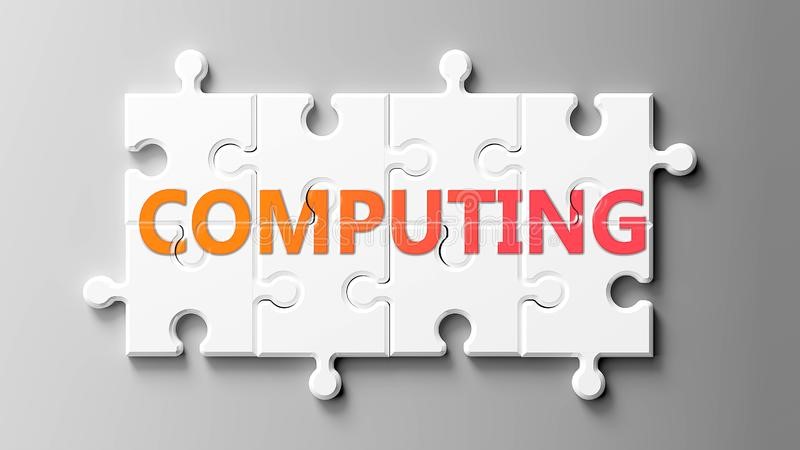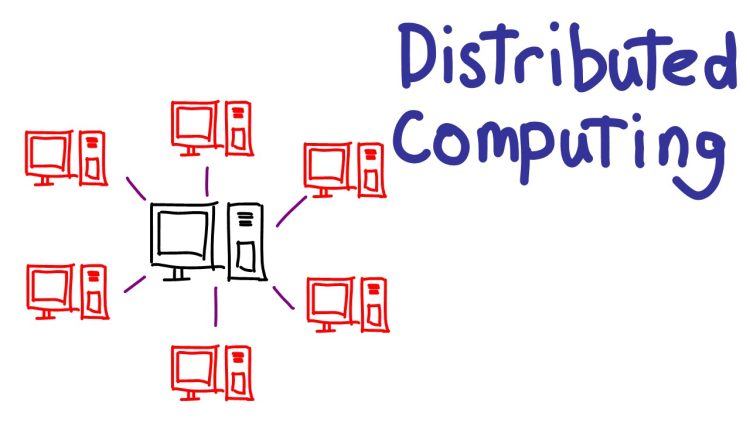Introduction: Computing as a Global Network
The evolution of computing power is no longer defined solely by the speed of individual machines. In today’s digital era, the true strength of computation emerges from networks — a distributed, interconnected ecosystem of devices, servers, and data centers that collectively process, store, and analyze vast amounts of information. Cloud computing, edge computing, and distributed systems form the nervous system of the modern digital world, enabling real-time services, global collaboration, and unprecedented computational scalability.
This article explores the architecture, principles, and societal impact of distributed computing. From the foundations of cloud infrastructure to the latest trends in edge and hybrid systems, we examine how computation has become a shared, dynamic, and intelligent resource, fundamentally reshaping business, science, and daily life.
1. The Emergence of Cloud Computing
Cloud computing emerged in response to the growing demand for scalable, flexible, and cost-effective computing resources. By centralizing computational power and delivering it as a service over the internet, cloud platforms transformed the way organizations and individuals access technology.
- Infrastructure as a Service (IaaS): Provides virtualized computing resources, including servers, storage, and networking. Users can deploy and manage applications without maintaining physical hardware. Examples include Amazon Web Services (AWS), Microsoft Azure, and Google Cloud Platform.
- Platform as a Service (PaaS): Offers a development environment, frameworks, and runtime support, enabling developers to build applications efficiently. Heroku and Google App Engine exemplify this model.
- Software as a Service (SaaS): Delivers complete applications over the internet, removing the need for local installation and maintenance. Examples include Salesforce, Zoom, and Microsoft Office 365.
Cloud computing represents a shift from owning hardware to accessing computation as a utility — flexible, on-demand, and scalable according to workload requirements.
2. Architecture of Distributed Systems
At the core of cloud computing lies distributed computing: multiple interconnected machines work collaboratively to process tasks. Key architectural elements include:
- Data Centers: Physical facilities hosting servers, storage systems, and networking equipment. Modern data centers are optimized for energy efficiency, cooling, and redundancy.
- Load Balancing: Distributes tasks among multiple servers to optimize resource usage, minimize latency, and ensure reliability.
- Replication and Fault Tolerance: Data and computation are replicated across nodes to prevent loss and maintain availability in case of hardware failures.
- Virtualization: Abstracts physical resources into virtual machines (VMs) or containers, enabling multiple applications to run independently on shared hardware. Technologies like VMware, Docker, and Kubernetes facilitate this abstraction.
Distributed systems are designed for scalability, reliability, and elasticity, allowing global operations to function seamlessly even under massive loads.
3. The Economics of Cloud Computing
Beyond technology, cloud computing has profound economic implications:
- Capital Expenditure (CapEx) vs. Operational Expenditure (OpEx): Organizations no longer need to invest heavily in on-premise hardware. Cloud services convert capital costs into operational expenses, making computing accessible to startups and small enterprises.
- Pay-as-you-go Models: Users pay only for resources consumed, enabling flexible scaling and efficient resource allocation.
- Global Markets and Innovation: By democratizing access to high-performance computing, cloud computing accelerates innovation in AI, biotechnology, fintech, and scientific research.
The cloud transforms computation into a shared economic utility, reducing barriers to entry and fostering a more inclusive technological ecosystem.
4. Edge Computing: Bringing Intelligence Closer to Users
While cloud computing centralizes resources, edge computing distributes computation closer to data sources — sensors, smartphones, and IoT devices. This approach addresses latency, bandwidth, and privacy concerns:
- Latency Reduction: Real-time applications such as autonomous vehicles, AR/VR, and industrial robotics require near-instant processing. Edge computing minimizes delay by processing data locally.
- Bandwidth Efficiency: Processing data at the edge reduces the need to transmit massive datasets to central servers, saving network resources.
- Enhanced Privacy: Sensitive data can be processed locally, mitigating exposure risks while still benefiting from global computational intelligence.
Edge computing complements the cloud by creating a hierarchical computational ecosystem, where devices, edge nodes, and central servers collaborate seamlessly.
5. Hybrid and Multi-Cloud Strategies
Organizations increasingly adopt hybrid and multi-cloud strategies to optimize performance, cost, and risk management:
- Hybrid Cloud: Combines private (on-premise) and public cloud resources. Sensitive workloads can run on private infrastructure, while scalable workloads leverage public cloud services.
- Multi-Cloud: Utilizes services from multiple cloud providers to avoid vendor lock-in, increase redundancy, and optimize resource allocation.
- Orchestration Tools: Kubernetes, OpenShift, and Terraform enable seamless management of complex hybrid and multi-cloud environments, automating deployment, scaling, and failover processes.
These strategies highlight a central theme of modern distributed computing: flexibility and resilience through heterogeneous architectures.
6. High-Performance Computing in the Cloud Era
Cloud infrastructure has enabled a democratization of high-performance computing (HPC). Traditionally confined to national labs and research institutions, HPC is now accessible to corporations, universities, and startups:
- Scientific Simulations: Cloud-based supercomputers perform climate modeling, molecular simulations, and astrophysical calculations at unprecedented scales.
- AI and Deep Learning: Training large neural networks requires massive parallel computation. Cloud GPUs and TPUs enable researchers to train models that were previously infeasible.
- Big Data Analytics: Distributed cloud architectures process petabytes of data in fields such as genomics, finance, and marketing analytics, enabling data-driven decision-making.
The combination of HPC and cloud elasticity accelerates discovery, democratizes access, and reduces the cost of experimentation.

7. Data Management and Storage in Distributed Systems
Distributed computing depends on efficient data management strategies:
- Distributed File Systems: Systems like HDFS (Hadoop Distributed File System) and Amazon S3 store data across multiple nodes, providing redundancy, scalability, and fault tolerance.
- Data Consistency Models: Distributed systems must balance availability, consistency, and partition tolerance. The CAP theorem outlines the trade-offs required for large-scale operations.
- Database Innovations: NoSQL databases (Cassandra, MongoDB) and NewSQL systems optimize storage and retrieval for distributed workloads, handling high throughput and low-latency queries.
Effective data management ensures that distributed computing is not only powerful but also reliable and accurate.
8. Security and Privacy Challenges
The centralization and distribution of computation introduce complex security challenges:
- Data Breaches: Cloud systems store vast amounts of sensitive information, making them attractive targets for attackers.
- Insider Threats: Employees and administrators with privileged access can pose security risks.
- Regulatory Compliance: GDPR, HIPAA, and other frameworks impose strict requirements on data handling and user consent.
To address these challenges, security measures include end-to-end encryption, zero-trust architectures, multi-factor authentication, and advanced intrusion detection systems. Privacy-preserving computation techniques, such as federated learning and homomorphic encryption, are increasingly integrated into distributed systems.
9. Artificial Intelligence and Distributed Computing
AI and distributed computing are mutually reinforcing:
- Training at Scale: Large neural networks require distributed training across multiple GPUs and nodes. Frameworks like TensorFlow Distributed and PyTorch Distributed facilitate this process.
- Inference Optimization: AI models deployed in edge nodes or hybrid cloud environments provide real-time decision-making for applications ranging from autonomous driving to predictive maintenance.
- Federated Learning: Enables AI models to learn from distributed data without centralizing sensitive information, balancing intelligence with privacy.
The synergy between AI and distributed systems is central to the next wave of digital transformation.
10. Sustainability and Energy Efficiency
The growth of distributed computing also raises environmental concerns:
- Energy Consumption: Data centers consume significant electricity. Optimizing cooling, server utilization, and hardware efficiency is critical.
- Green Cloud Initiatives: Providers invest in renewable energy, energy-efficient hardware, and carbon offset programs to reduce environmental impact.
- Edge Energy Optimization: Edge nodes often operate in resource-constrained environments, requiring low-power designs and adaptive computation.
Sustainable distributed computing ensures that global computational expansion aligns with ecological responsibility.
11. The Future of Distributed Computing
The trajectory of distributed computing points toward a highly intelligent, pervasive, and collaborative network of computation:
- Internet of Everything (IoE): Billions of interconnected devices creating a vast mesh of computational resources.
- Autonomous Distributed Systems: Self-optimizing, self-healing networks that manage computation, storage, and communication with minimal human intervention.
- Quantum-Enhanced Cloud: Integration of quantum co-processors into cloud platforms, providing new capabilities for optimization, cryptography, and scientific modeling.
The future envisions a computational fabric that spans the globe, intelligently orchestrating resources, data, and AI to augment human capabilities at unprecedented scale.
Conclusion: Computing Power as a Global Nervous System
Distributed computing has transformed computation from isolated machines into a global, interconnected system, akin to the nervous system of the digital world. Cloud and edge infrastructures, coupled with AI and HPC, create a seamless ecosystem capable of handling the complexity of modern life.
The implications are profound: science accelerates, economies are reshaped, and everyday life becomes increasingly dependent on invisible yet intelligent computational networks. Yet this power comes with responsibilities — for security, privacy, sustainability, and equitable access.
Distributed computing is not merely a technological achievement; it is the structural backbone of the digital age, enabling humanity to scale intelligence, collaboration, and innovation beyond the limits of individual machines.











































